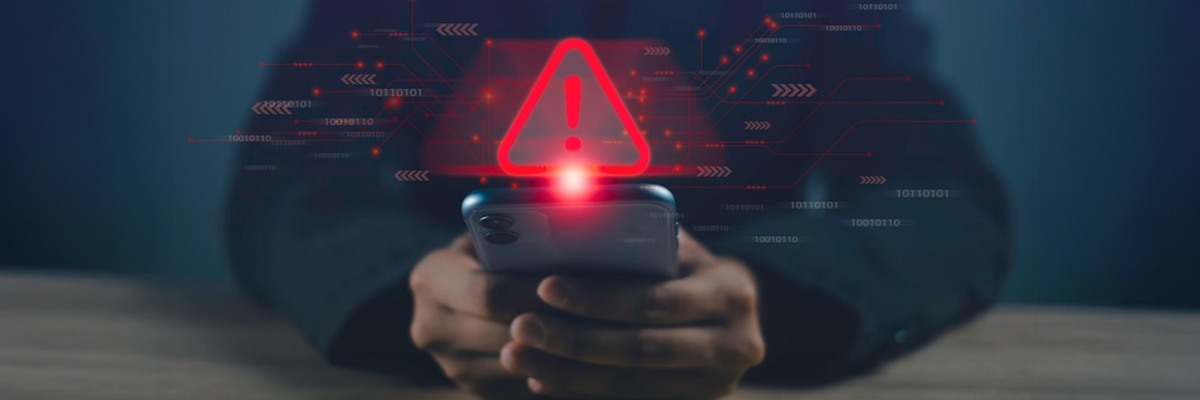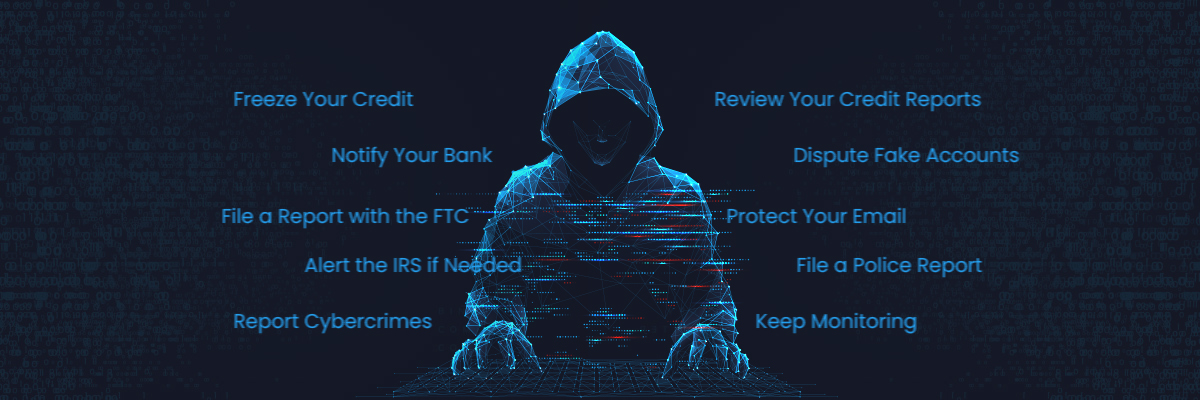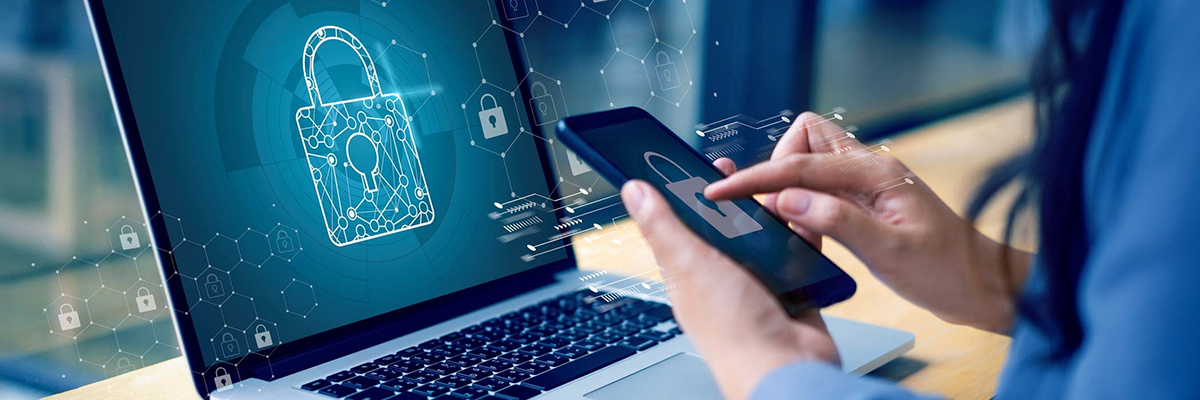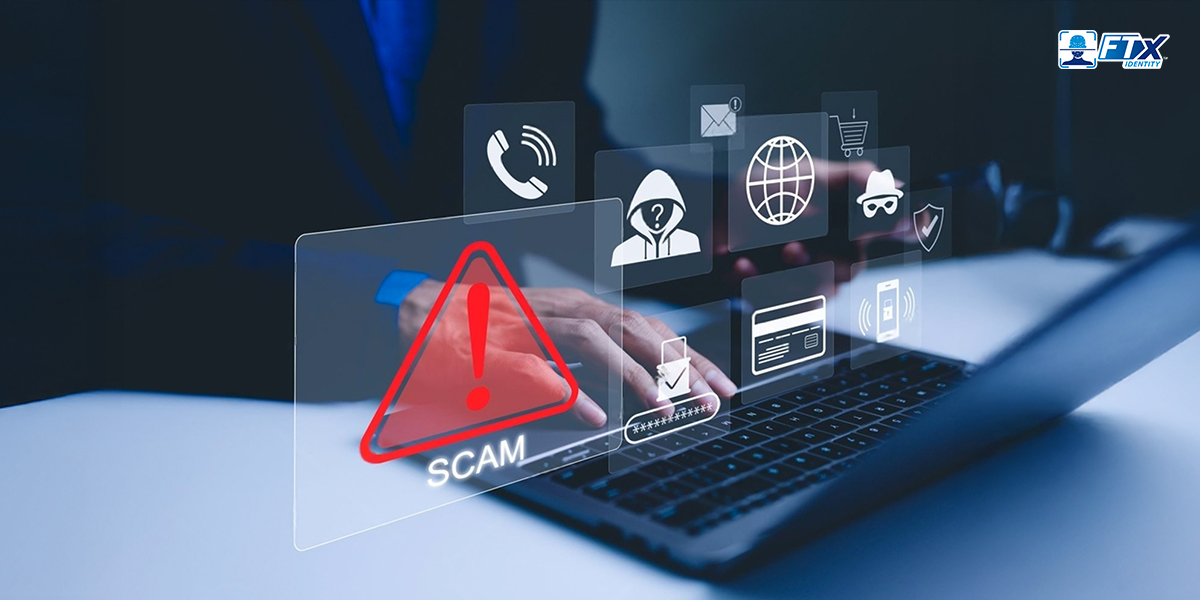Identity theft scams are becoming more advanced, threatening individuals and businesses alike. Fraudsters have mastered tactics like phishing emails, deepfake technology, and social engineering to gain access to sensitive information.
In 2024, the Federal Trade Commission’s (FTC) Consumer Sentinel Network received over 6.47 million reports, with 40% linked to fraud and 18% involving identity theft.
This guide will help you understand common identity theft scams, spot warning signs, and take proactive steps to safeguard your information. By the time you finish reading, you’ll have the tools to protect yourself and take action if you fall victim to fraud.
Understanding Identity Theft: What It Is and How It Happens
Identity theft occurs when someone uses your personal information without permission, often for financial gain. This can include stealing your Social Security number, credit card details, or even medical insurance information. The fallout can be severe, ranging from drained bank accounts to long-term credit damage and legal complications.
Tactics Scammers Use to Steal Information
Scammers rely on a variety of schemes to obtain Personally Identifiable Information (PII). Here are a few of the most common:
- Phishing Emails and Text Messages: Fraudsters mimic legitimate organizations to trick victims into providing login credentials, financial details, or sensitive documents.
- Data Breaches: Cyberattacks on companies result in large-scale theft of customer information.
- Social Media Oversharing: Publicly posted information, such as birthdates or favorite vacation spots, is leveraged to bypass security questions.
- Mail and Document Theft: Physical documents like bank statements or pre-approved credit offers can provide criminals with critical data.
Real-Life Examples of Identity Theft Scams
- Los Angeles, California resident Jeff Drobman became a victim of SIM swapping after scammers deceived his mobile provider into transferring his phone number to them. With control of his number, they used SMS two-factor authentication to access his bank account and steal $21,000.
- Senita Dill and Ronald Knowles of Mill Spring, North Carolina, carried out a tax fraud scheme by using stolen personal details like names, birth dates, and Social Security numbers. They filed hundreds of fake tax returns, stealing over $3.5 million in refunds meant for unsuspecting victims.
The SCAM Acronym: Understand the Psychology of Theft

The Cybersecurity and Infrastructure Security Agency (CISA) suggests the SCAM acronym as a simple way to remember the key steps for protecting your identity:
S – Be Stingy with Your Information
Only share personal details when absolutely necessary. Always verify who’s requesting your information.
Tip: Avoid providing your SSN unless it’s legally required.
C – Check Your Financial Records Regularly
Keeping an eye on your account transactions can help you spot fraud quickly.
Tip: Many banks allow you to set up alerts for unusual activity, ensuring you’re immediately notified of suspicious charges.
A – Ask for Credit Reports
Review your credit reports annually from the three main bureaus to look for unauthorized activity.
Tip: Use Annual Credit Report to access free reports securely.
M – Maintain Secure Records
Shred sensitive documents and use strong passwords for online accounts.
Tip: Use a fireproof safe for important physical documents and a reputable password manager for online security.
15 Most Common Identity Theft Scams Today (2025 Edition)
Identity theft is evolving, with scammers constantly finding new ways to exploit vulnerabilities. Understanding their methods is one of the best ways to protect yourself.
Below, we break down 15 common scams in 2025 by type, explaining how they work and providing real-world examples to bring each to life.
Phishing Emails & Smishing Texts
Phishing Emails
Scammers send emails pretending to be from legitimate organizations like banks or retailers, tricking recipients into clicking links or sharing sensitive information.
Example: An email claiming to be from your bank asks you to update your login info. The link leads to a fake website, and your credentials fall directly into the scammer’s hands.
Smishing Texts
Similar to phishing, smishing happens via text messages. Scammers send alarming texts, like reporting account issues or delivering fake delivery notices, to prompt action.
Example: A message claims your Netflix account needs payment verification. Clicking the link directs you to a fraudulent payment page.
Vishing (Phone Scams)
Phone Scams
Vishing involves phone calls where scammers impersonate officials or trusted individuals to extract sensitive details like Social Security numbers or banking information.
Example: A caller pretends to be from your bank, claiming fraudulent activity on your account. They ask for your account number or one-time password (OTP) to “secure” your finances.
Government Impersonation Scams (SSA, IRS)
Social Security Scams
Scammers pose as officials from the Social Security Administration (SSA), claiming there’s an issue with your benefits or SSN, and demand payment to fix it.
Example: A caller says your SSN has been suspended due to suspicious activity and asks for a “reinstatement fee.”
IRS Tax Scams
Fraudsters impersonate IRS agents, threatening audits or arrests if “unpaid taxes” aren’t immediately resolved.
Example: You receive a threatening voicemail claiming you owe back taxes, instructing you to pay via gift card or wire transfer.
Medical Identity Theft
Healthcare Fraud
Scammers steal your personal details to claim medical treatments or file fake health insurance claims.
Example: You discover that someone has used your insurance to pay for expensive surgeries when reviewing an Explanation of Benefits statement.
Synthetic Identity Creation
Synthetic IDs
Fraudsters create a fake identity by combining real and fabricated personal details, like using a genuine Social Security number with a fake name. These identities are often used to apply for credit.
Example: A scammer uses a child’s SSN (since it’s often unused) to open credit accounts that go unnoticed for years.
Data Breach Exploits
Data Breaches
Cybercriminals exploit large-scale data breaches to steal personal information and sell it on the dark web.
Example: A breach at a major retail chain exposes millions of customers’ credit card data, which is then used for fraudulent purchases.
Credit Card Fraud
Credit Card Skimming
Scammers attach skimming devices to ATMs or gas pumps to steal card details and PINs for unauthorized transactions.
Example: After using an unfamiliar gas station terminal, you notice multiple unauthorized charges on your credit card statement.
Account Takeover Fraud
Hacked Accounts
Using stolen login credentials, fraudsters gain control of your accounts, often changing passwords to block you out.
Example: Hackers get access to your online shopping account and place orders using your stored payment details.
Deepfake Scams & Voice Cloning
AI Voice Spoofing
Fraudsters use artificial intelligence to mimic voices of trusted individuals, like family members, to request money.
Example: You receive a voice call that sounds just like your friend, asking for an urgent loan. Later, you find out your friend never made the call.
Tax Return Fraud
Refund Scams
Scammers file fake tax returns using stolen SSNs to claim refunds before the actual taxpayers can file.
Example: You try to e-file your taxes but find out someone has already submitted a return in your name.
Employment Fraud

Fake Job Offers
Scammers use fake employment opportunities to steal sensitive information during the “application” process or even take fake onboarding payments.
Example: You’re offered a remote job but asked to send your Social Security number and banking details for direct deposits. Soon after, your accounts are compromised.
Child Identity Theft
Targeting Minors
Scammers use children’s SSNs to create accounts or build credit, often going unnoticed until the child becomes an adult.
Example: When applying for their first loan, a teenager finds out their SSN has been tied to years of fraudulent activity.
Social Media/LinkedIn Data Mining
Personal Info Grab
Fraudsters mine social media profiles to gather details they can use for impersonation or phishing attacks.
Example: After sharing your birthday and workplace on LinkedIn, you’re targeted with a phishing email pretending to be from your employer.
Utility Bill Scams
Fake Utility Calls
Scammers claim to represent your utility provider, demanding payment for overdue bills to avoid disconnection.
Example: A caller warns your electricity will be shut off within hours unless you pay immediately through a payment app.
Travel and Immigration Scams
Fake Visa Services
Fraudsters pose as travel agents or visa specialists, stealing personal information or charging for fake services.
Example: You pay a hefty fee for “priority visa processing” from a fake service site, only to lose your money and personal data.
Warning Signs of Identity Theft
It’s easier to protect yourself from identity theft when you know what to look for.
Here are some common red flags to watch out for and quick tips to help you take action if something seems off:
Seeing Unexpected Charges? If any surprise transactions pop up on your bank or credit card accounts, it might be fraud. Stay ahead by setting up alerts to track activity in real time.
Noticed Missing Mail? If your bills or statements stop arriving, scammers might be redirecting your mail. Consider going paperless or using a locked mailbox for extra security.
Denied Credit Recently? If your credit application is suddenly rejected for no clear reason, someone might be damaging your credit. Check your credit report for unfamiliar accounts or inquiries.
IRS Sending Warnings? A notice about duplicate tax filings could mean someone’s filed using your Social Security number. File your taxes early to reduce risks, and think about getting an IRS IP PIN.
Confused by Medical Bills? If you’re getting billed for procedures or services you didn’t request, someone might be using your insurance. Reach out to the provider immediately to clear things up.
Strange Credit Activity? Regularly review your credit report for any odd accounts or inquiries. Don’t forget, you can get a free annual credit report from each bureau.
Password Reset Emails You Didn’t Request? This could mean someone’s trying to access your account. Update your password immediately and turn on two-factor authentication for extra peace of mind.
Protecting Yourself Against Identity Theft
Protecting your identity doesn’t have to be complicated. Here are some simple, effective steps you can take:
- Use Strong Passwords: Create unique passwords for every account and use a password manager to keep them secure.
- Enable Two-Factor Authentication: Add an extra layer of security by requiring a second form of verification, like a text code.
- Shred Documents: Dispose of sensitive paperwork, like old bills or statements, securely with a shredder.
- Keep an Eye on Your Accounts: Regularly monitor your bank accounts and credit reports to spot any unusual activity early.
- Freeze Your Credit: Prevent unauthorized accounts by freezing your credit with all three major bureaus (Equifax, Experian, and TransUnion).
- Stay Updated: Turn on automatic updates to keep your devices and apps protected with the latest security patches.
- Limit What You Share Online: Avoid posting personal details like your full name or birthday on public platforms.

Reporting Identity Theft: Steps to Take If You’re a Victim
Discovering you’re a victim of identity theft can be scary and overwhelming, but don’t panic. Taking the right steps quickly can help you reduce the damage and get back on track. Here’s a straightforward guide to help you protect yourself and reclaim your identity.
1. Freeze Your Credit
One of the first things to do is freeze your credit with Experian, TransUnion, and Equifax. This prevents anyone from opening new accounts in your name. The process is free, and you can do it through their websites or apps. Just make sure to save the PIN or password each agency provides so you can lift the freeze when needed.
2. Notify Your Bank
Contact your bank’s fraud department as soon as possible to report suspicious transactions. They can freeze affected accounts, reissue cards, and start investigating unauthorized charges. You might also want to check your banking app for quick options to lock your card or report fraud right away.
3. File a Report with the FTC
Go to IdentityTheft.gov to file an official report with the Federal Trade Commission (FTC). Completing their recovery plan and affidavit is essential when disputing fraudulent accounts or charges.
4. Alert the IRS if Needed
If you think someone is messing with your taxes, like filing a return under your name, fill out Form 14039, the IRS Identity Theft Affidavit. This helps the IRS secure your account and prevents further tax-related misuse.
5. Report Cybercrimes
If your personal information was stolen online, report the crime via the Internet Crime Complaint Center at IC3.gov. They work with federal authorities to address cyber-related identity theft cases.
6. Review Your Credit Reports
Head to AnnualCreditReport.com to access free credit reports from Experian, TransUnion, and Equifax. Go through each report and look for accounts or inquiries you don’t recognize. For any fraudulent accounts, report them to the relevant credit bureau.
7. Dispute Fake Accounts
If someone opened fake accounts in your name, reach out to those companies directly. Send them dispute letters by certified mail and include any supporting documents like your FTC affidavit. Ask them to close the accounts and confirm the removal in writing.
8. Protect Your Email
Compromised email accounts can be a goldmine for thieves. If this happens, change your password immediately, enable two-factor authentication (2FA), and revoke any app or device access linked to your email.
9. File a Police Report
Your bank or creditors might need a police report to proceed with their fraud investigations. Contact your local police department, explain the situation, and provide supporting documents like your FTC affidavit. Be sure to get a copy for your records.
10. Keep Monitoring
Identity theft doesn’t always stop after the first incident, so keep a close eye on things. Set up Google Alerts for your name and location to get notified if it shows up somewhere suspicious. Regularly check your banking activity and credit reports too.
Identity Theft Protection Services: Worth It or Not?
With identity theft on the rise, many people are considering whether paid identity theft protection services are worth the investment. This post dives into the differences between free monitoring options and paid solutions, weighing the pros and cons of each to help you decide what’s best for your needs.
Free Monitoring vs Paid Protection

Both free and paid identity theft protection services aim to prevent or minimize the damage caused by identity theft. However, their features, scope, and level of support differ significantly.
Free Monitoring Services
Free options include tools provided by banks, credit card issuers, and the government. For example, many banks offer alerts for suspicious card activity, and Annual Credit Report allows you to obtain free credit reports from the three major credit bureaus annually.
Pros:
- Cost-effective: There’s no financial investment required.
- Basic notifications: Alerts for suspicious activity on bank accounts and credit lines are often automated and easy to access.
- Access to credit reports: Federal law guarantees free access to annual credit reports, which you can use to check for anomalies.
Cons:
- Limited scope: Free monitoring typically only covers specific data, like credit card transactions or credit report inquiries.
- Reactive, not proactive: Alerts often notify you after suspicious activity occurs, rather than preventing it.
- No extra support: There’s little to no assistance in recovering from identity theft, requiring you to handle disputes and recovery alone.
Paid Identity Theft Protection Services
Paid services, like LifeLock or Experian IdentityWorks, offer a more comprehensive approach. They combine credit monitoring, dark web surveillance, and direct customer support to address potential threats quickly.
Pros:
- Proactive monitoring: Many services scan the dark web for stolen credentials, alerting you to potential breaches before accounts are misused.
- All-in-one offerings: Paid solutions typically bundle features like credit monitoring, identity recovery support, and fraud insurance.
- Recovery support: If you fall victim, most services include access to specialists who can guide you through account recovery and dispute processes.
Cons:
- Cost: Paid plans range from $10 to $30+ monthly, which can add up over time.
- False sense of security: Despite their promises, no service can guarantee complete protection from identity theft.
- Privacy concerns: Sharing your data with third-party providers might feel like a trade-off for enhanced protection.
Should You Opt for Paid or Free Monitoring?
To help you decide, we’ve broken down recommendations based on user type:
| User Type | Recommendation |
|---|---|
| Parents | Choose paid protection if you want to safeguard your children’s identities, which may be targeted and misused without detection for years. Free monitoring may not offer the robust tools needed for this. |
| Entrepreneurs | Paid services are worth it for business owners dealing with sensitive customer and financial data. Advanced monitoring can help prevent breaches that could harm your business reputation. |
| Seniors | Seniors are often targeted by scams. A paid service with hands-on recovery support is highly recommended if managing accounts is challenging or if you’re at higher risk of fraud. |
Conclusion: Staying Vigilant Against Identity Theft Scams
Protecting your identity has never been easier with FTx Identity. We provide seamless, AI-powered solutions to verify IDs, detect suspicious activity, and keep your personal information secure. Whether you’re shopping online, in-store, or managing compliance as a business, our cutting-edge tools ensure accuracy and peace of mind.
Take control of your information today, and help build a safer, smarter community by sharing these insights with loved ones. Together, we can outsmart identity theft and protect what matters most.
Don’t leave your security to chance. Schedule a consultation today and see how
our advanced solutions can safeguard your personal and business data.
Experience a demo and take the first step toward peace of mind.
